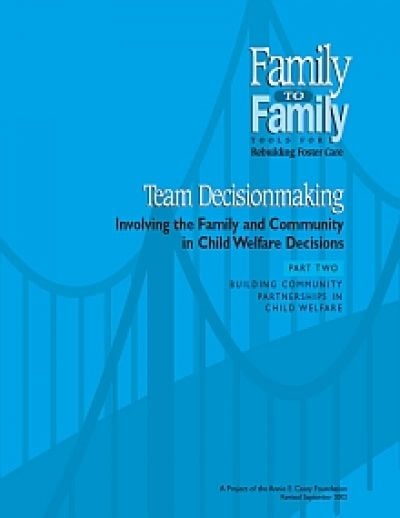A Voice for Choice
Team decisionmaking can be particularly powerful as a vehicle for older children and youth to fully participate in decisions regarding their placement.

The Casey Foundation’s Family to Family (F2F) initiative was an opportunity for states and communities to reform their foster care system. Since its inception in 1992, F2F showed that child welfare agencies can effectively partner with poor communities to provide better care for kids who have been abused or neglected.
Team decisionmaking is one strategy that F2F used to get all parties to the table and on the same page in working for the safety, care and well-being of the child. This manual outlines steps and procedures agencies can take to incorporate and practice team decisionmaking.
Since January 2020, the National Council on Crime and Deliquency has managed TDM, and is working to expand the practice’s reach, impact and evidence base.
Often families can be helped to safely care for their children in their own communities and their own homes—if appropriate support, guidance and help is provided to them early enough. However, there are emergency situations that require the separation of a child from his or her family. At such times, every effort should be made to have the child live with caring and capable relatives or with another family within the child’s own community—rather than in a restrictive institutional setting.
We hope you'll find value in this report. We’d love to get a little information from you, which we'll use to notify you about relevant new resources.